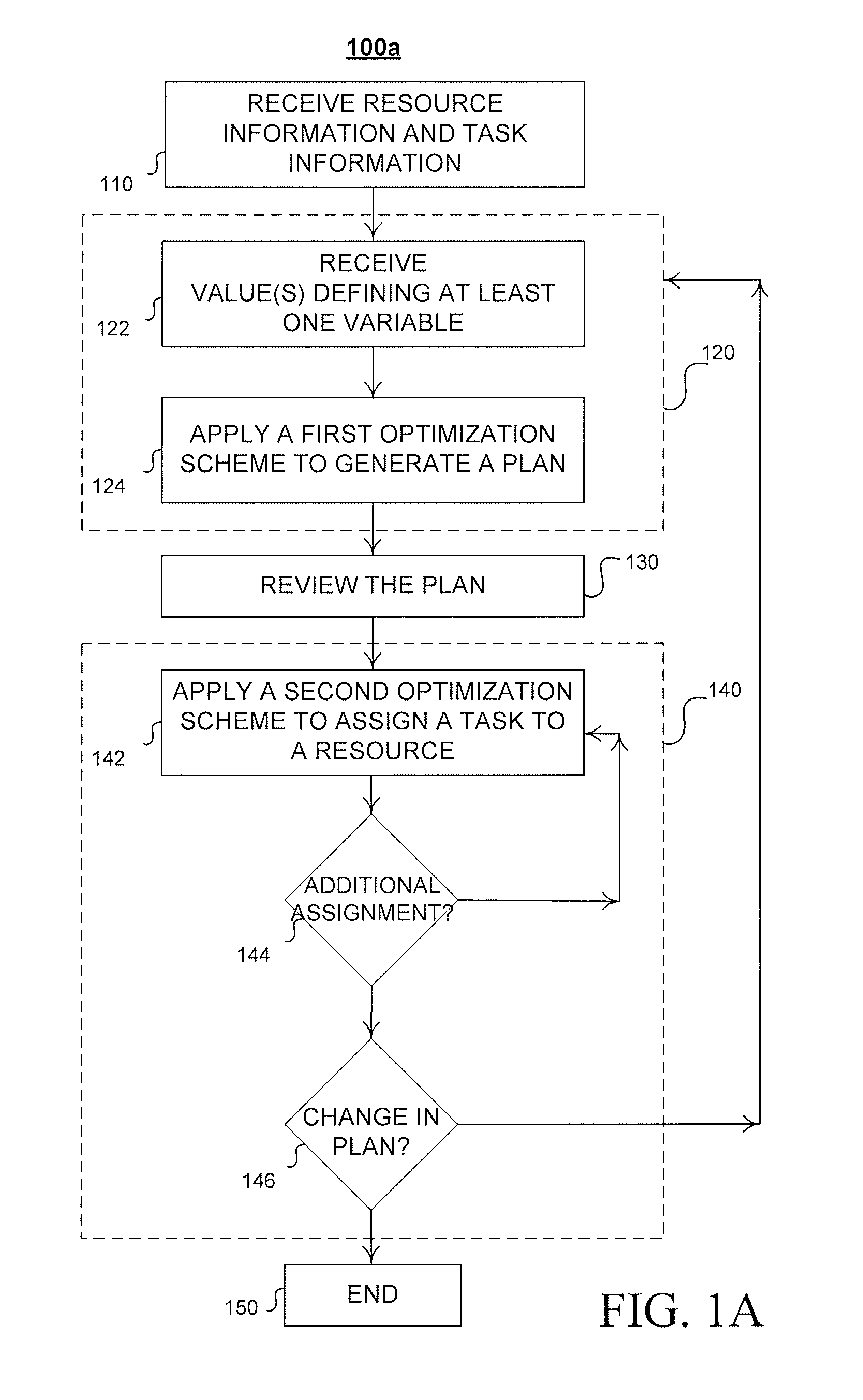Method and System for Optimized Task Assignment
a task assignment and task technology, applied in the field of computerimplemented methods and apparatuses, can solve the problems of limiting the work-in-progress at any given time, unable to accommodate dynamic changes associated with resource allocation, and unable to adapt to dynamic changes in resource allocation, so as to efficiently highlight bottlenecks in a project, improve project performance, and improve project efficiency
- Summary
- Abstract
- Description
- Claims
- Application Information
AI Technical Summary
Benefits of technology
Problems solved by technology
Method used
Image
Examples
Embodiment Construction
[0025]FIG. 1A shows a flowchart 100a depicting an exemplary process for assigning tasks to one or more resources. The elements of the flowchart 100a are described using the exemplary management system 200 of FIG. 3. The process is generally divided into four steps—receiving resource information and task information (step 110), producing a general plan for delivering tasks (step 120), reviewing the plan (step 130), and performing allocation of resources to tasks based on the plan (step 140). The plan generation process (step 120) can include receiving value(s) defining at least one variable in a group of variables (step 122), and applying a first optimization scheme to generate a plan for delivering the tasks based on the received data (step 124). The task assignment process (step 140) can include applying a second optimization scheme to assign a task to an available resource based on the delivery plan and the received data (step 142), determining whether there are additional assignm...
PUM
 Login to View More
Login to View More Abstract
Description
Claims
Application Information
 Login to View More
Login to View More - R&D
- Intellectual Property
- Life Sciences
- Materials
- Tech Scout
- Unparalleled Data Quality
- Higher Quality Content
- 60% Fewer Hallucinations
Browse by: Latest US Patents, China's latest patents, Technical Efficacy Thesaurus, Application Domain, Technology Topic, Popular Technical Reports.
© 2025 PatSnap. All rights reserved.Legal|Privacy policy|Modern Slavery Act Transparency Statement|Sitemap|About US| Contact US: help@patsnap.com



